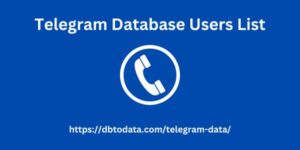Are you looking to dive into the world of data analysis using GitHub as your primary source? If so, you’ve come to the right place! In this article, we will explore how you can leverage GitHub for data analysis, the tools and techniques you can use, and the benefits of incorporating GitHub data into your analysis projects.
Getting Started with GitHub Data Analysis
GitHub is a treasure trove of data waiting to be analyzed. From code repositories to user activity, there is a wealth of information that can provide valuable insights for your analysis projects. But where do you start?
Step 1: Accessing GitHub Data
The first step in GitHub data analysis is Telegram Database Users List getting access to the data. You can easily retrieve data from public repositories using the GitHub API. This API allows you to pull data such as commit history, issues, and pull requests, which can be used for analysis.
Step 2: Cleaning and Preprocessing Data
Once you have access to the data, the next step is to clean and preprocess it. This involves removing any irrelevant or duplicate data, handling missing values, and transforming the data into a format suitable for analysis. Tools like Pandas in Python can be incredibly helpful for this task.
Step 3: Analyzing GitHub Data
With clean and preprocessed data in hand, you can now start analyzing GitHub data. You can use various statistical and machine learning techniques to uncover patterns, trends, and insights from the data. Visualization tools like Matplotlib and Seaborn can help you present your findings effectively.
Tools and Techniques for GitHub Data Analysis
There are a variety of tools and techniques you can use for GitHub data analysis. Some of the popular ones include:
- Python: Python is a versatile programming language with a rich ecosystem of libraries for data analysis, such as Pandas, NumPy, and Scikit-learn.
- R: R is another popular language for data analysis, known for its powerful statistical capabilities and visualization libraries like ggplot2.
- SQL: SQL can be used to query and manipulate data stored in databases, making it a valuable tool for analyzing GitHub data.
Benefits of GitHub Data Analysis
There are numerous benefits to incorporating GitHub data into your analysis projects. Some of the key advantages include:
- Rich Source of Data: GitHub provides a diverse range of data, including code repositories, user activity, and collaboration metrics.
- Community Collaboration: By analyzing GitHub data, you can gain insights into how developers collaborate on projects, identify trends, and improve productivity.
- Data-driven Decision Making: Utilizing GitHub data for analysis can help you make informed decisions based on concrete data and C Level Executive evidence.
In conclusion, GitHub data analysis offers a wealth of opportunities for deriving insights and adding value to your projects. By following the steps outlined in this article and leveraging the right tools and techniques, you can unlock the power of big data and take your analysis to the next level. So why wait? Start exploring GitHub data today and see the impact it can have on your projects!


